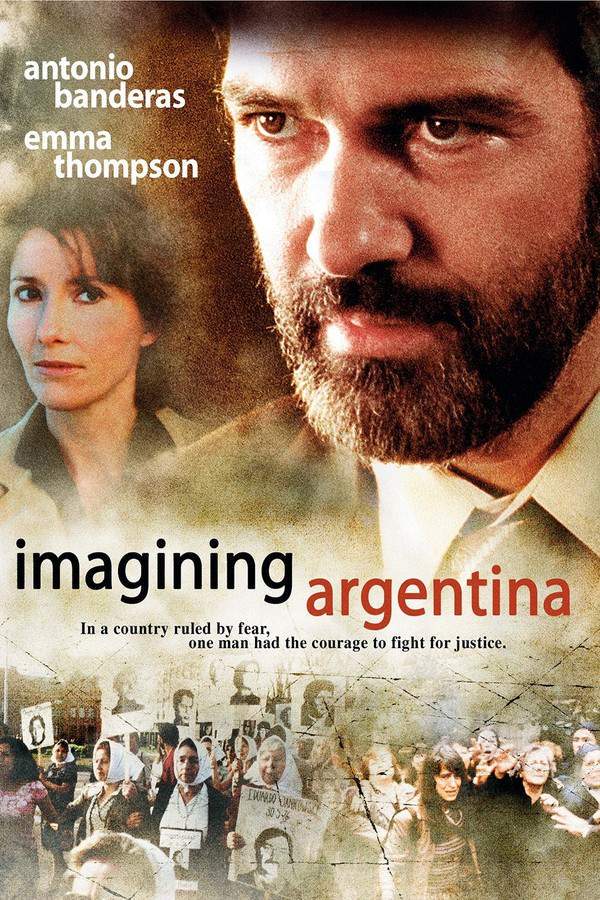
The Official Story
Year: 1985
Runtime: 112 mins
Language: Spanish
Director: Luis Puenzo
In 1983 Buenos Aires, as Argentina’s brutal military dictatorship crumbles, history teacher Alicia begins to probe the unsettling secrets surrounding Gaby, the daughter she adopted. The investigation forces her to confront a terrifying truth the regime tried to hide, revealing the dark origins of her child’s past.
Warning: spoilers below!
Haven’t seen The Official Story yet? This summary contains major spoilers. Bookmark the page, watch the movie, and come back for the full breakdown. If you're ready, scroll on and relive the story!
The Official Story (1985) – Full Plot Summary & Ending Explained
Read the complete plot breakdown of The Official Story (1985), including all key story events, major twists, and the ending explained in detail. Discover what really happened—and what it all means.
Set in Argentina in 1983, the waning days of the country’s last military dictatorship unfold against a backdrop of state-sponsored terror, where thousands are killed or vanish into the shadows and many are buried in unmarked graves. The film moves through a society that is just beginning to grapple with the scale of its own violence, and it follows a family navigating the fragile line between routine life and an undercurrent of fear that quietly reshapes everything around them.
Alicia Marnet, a high school history teacher, and her husband [Roberto Ibáñez], a government official, live in Buenos Aires with their 5-year-old adopted daughter, Gaby. This household embodies the complacent security of the upper-middle class, where Alicia clings to a hopeful sense that the world is orderly and that only the clearly guilty are targeted. Yet as the country’s past abuses intrude on everyday life, her assumptions begin to crack, revealing how little she truly knows about the violence that surrounds them.
A fellow teacher, [Benítez], challenges Alicia’s worldview, and some of her students start to raise difficult questions about the official history they are taught. The classroom becomes a microcosm of a country forced to confront its own past, and Benítez’s insistence on telling stories that contradict the government narrative pushes Alicia to reexamine what she believes she knows.
Ana, Alicia’s longtime friend who has returned from exile in Europe, shares harrowing memories of living under surveillance and the fear that accompanied it. Her story of apartment searches, confinement, and the suspicion that babies may have been taken from pregnant mothers casts a long shadow over Alicia’s sense of safety. The revelation that ailing justice often hides in plain sight compounds the sense that nothing is ever as simple as it seems.
Alicia grows increasingly curious about Gaby’s origins and asks questions about Gaby’s birth that her husband has urged her to ignore. She wonders why the family marks the day they brought Gaby home rather than the day she was born, and whether Roberto ever truly met Gaby’s birth mother. Roberto’s insistence that the adoption is straightforward clashes with Alicia’s nagging doubt, and the tension between them begins to reveal the strains that lie beneath their domestic calm.
Costa, a student who keeps nudging his classmates toward more critical thinking, serves as a catalyst for the unfolding questions. When Alicia sees newspaper clippings about desaparecidos taped to the blackboard, she witnesses a moment of tension and protected vulnerability within the classroom, as Benítez steps in to shield a student from retaliation. This moment marks a turning point: Alicia’s research deepens, and she starts to see how truth can be hidden within ordinary life.
In her search for Gaby’s hospital birth records, Alicia encounters Sara, whose own daughter was kidnapped by the armed forces. Sara shows a photograph of her daughter at Gaby’s age, a haunting link that suggests Gaby could be connected to a larger network of missing children. This discovery unsettles Alicia and intensifies her sense that the family’s past may be more tangled than they imagined.
Roberto’s world of work becomes increasingly unstable as colleagues vanish or are dragged into the country’s political machinations. He clashes with his liberal father and brother, who condemn his ties to the ruling elite and argue for justice and social equality. The strain of political undercurrents seeps into the home, challenging the couple’s marriage and the future they imagine for Gaby.
Alicia invites Sara into their lives to meet Roberto, hoping to uncover any truth about Gaby’s origins. Roberto’s fury erupts as he refuses to acknowledge the possibility that Gaby’s origins might be more complicated than the official adoption story. Alicia’s resolve hardens; she confronts him with the painful reality that his attitude may be a reflection of a broader, deafening indifference to the fates of missing children. In a moment of violence, he assaults Alicia, a stark testament to how fear and anger can erupt in intimate spaces.
That moment is interrupted by a phone call from Gaby, who is staying with her grandparents. She calls to ask her mother to listen to her sing, requesting that Alicia hear her perform a simple nursery tune, En el país de Nomeacuerdo. The ordinary warmth of that call stands in stark relief to the storm raging in the adults’ lives, and it becomes a quiet, aching reminder of what is at stake when truth is buried and families are fractured.
The film’s final image lingers on Gaby—safe, listening, and singing in a wicker rocking chair—an enduring symbol of innocence and resilience in a country wrestling with its own dark history. The small, intimate moments—the song she sings, the quiet echo of a mother’s footsteps, the unanswered questions—leave a lasting impression of a family and a nation trying to find light in the wake of fear.
En el país de Nomeacuerdo
The tale remains grounded in nuanced performances and a restrained, observant tone that invites reflection rather than sensationalism. Through Alicia’s evolving awareness, the film questions how much a family can know about one another when history itself refuses to reveal all its truths, and it asks viewers to consider what responsibility those who live under such regimes owe to the vulnerable among them.
Last Updated: October 09, 2025 at 14:27
Unlock the Full Story of The Official Story
Don't stop at just watching — explore The Official Story in full detail. From the complete plot summary and scene-by-scene timeline to character breakdowns, thematic analysis, and a deep dive into the ending — every page helps you truly understand what The Official Story is all about. Plus, discover what's next after the movie.
The Official Story Timeline
Track the full timeline of The Official Story with every major event arranged chronologically. Perfect for decoding non-linear storytelling, flashbacks, or parallel narratives with a clear scene-by-scene breakdown.

Similar Movies to The Official Story
Discover movies like The Official Story that share similar genres, themes, and storytelling elements. Whether you’re drawn to the atmosphere, character arcs, or plot structure, these curated recommendations will help you explore more films you’ll love.
Explore More About Movie The Official Story
The Official Story (1985) Scene-by-Scene Movie Timeline
The Official Story (1985) Movie Characters, Themes & Settings
The Official Story (1985) Spoiler-Free Summary & Key Flow
Movies Like The Official Story – Similar Titles You’ll Enjoy
Argentina, 1985 (2022) Ending Explained & Film Insights
Imagining Argentina (2004) Film Overview & Timeline
Baires (2015) Complete Plot Breakdown
Private Lives (2001) Full Movie Breakdown
Cautiva (2004) Ending Explained & Film Insights
The Blow: Chronicle of a Conspiracy (2006) Full Summary & Key Details
Chronicle of an Escape (2006) Detailed Story Recap
Murder in The Senate (1984) Spoiler-Packed Plot Recap
Sweet Country (1987) Full Summary & Key Details
The Girlfriend (1988) Detailed Story Recap
There are some guys down (1985) Spoiler-Packed Plot Recap
The South (1988) Story Summary & Characters
Informes y testimonios. La tortura política en Argentina 1966-1972 (1973) Film Overview & Timeline
Garage Olimpo (1999) Complete Plot Breakdown
An Argentinian Crime (2022) Full Movie Breakdown

















